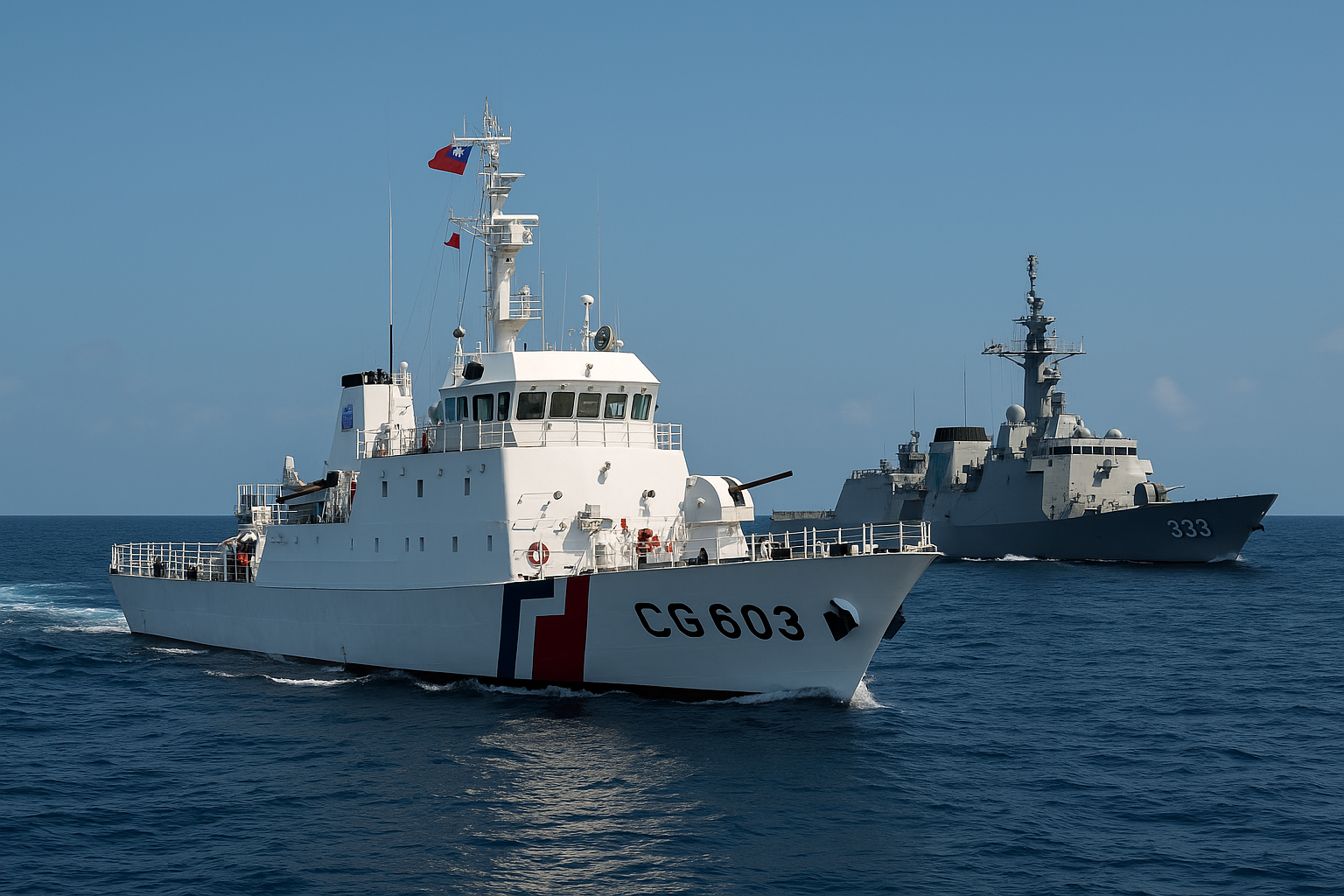Taiwan’s Coast Guard and military units held a joint exercise in the port city of Kaohsiung on Sunday (June 8, 2025), demonstrating readiness against escalating ‘grey zone’ tactics used by China. The drills were overseen by Taiwanese President Lai Ching-te.
The simulation involved responding to the seizure of a ferry by ‘international terrorists,’ reflecting Taiwan’s growing concern over threats that fall short of direct military confrontation, yet steadily increase regional tensions.
What Exactly Happened During the Drill?
During the drill, Taiwan’s Coast Guard collaborated with an Interior Ministry rescue helicopter and an army medical evacuation (medevac) helicopter. The units executed a realistic scenario where personnel boarded a hijacked ferry, regained control, and evacuated casualties.
For the first time, a Navy anti-submarine helicopter flew alongside the Coast Guard and medevac helicopters, showcasing increased coordination and joint operational capability across Taiwan’s maritime security apparatus.
President Lai addressed observers—including Neil Gibson, the senior United States (US) diplomat based in Kaohsiung—highlighting the Coast Guard’s crucial frontline role. Lai remarked:
“Taiwan has been facing constant grey intrusion from China, but our coast guard colleagues have always been on the front line to enforce the law and protect the lives and safety of the people of Taiwan.”
Why Are ‘Grey Zone’ Tactics Such a Concern for Taiwan?
Taiwan frequently encounters provocative Chinese actions—such as sand dredging and cutting of undersea cables—intended to pressure Taipei without triggering outright military conflict. These actions are termed ‘grey zone’ tactics, representing threats below the threshold of open warfare but harmful to national security and sovereignty.
Taiwan’s Coast Guard, typically the first responder, has been increasingly tasked to counter these incidents, thereby demanding enhanced inter-agency coordination and preparedness.
President Lai reinforced Taiwan’s commitment to comprehensive national defence and societal resilience, stating:
“The government will continue to consolidate the strength of all departments and strengthen the resilience of the entire society to defend national security and safeguard Taiwan’s democracy and freedom.”
How is Taiwan Strengthening its Coast Guard Capabilities?
Taiwan’s Coast Guard is undergoing significant modernisation. Central to this expansion are the Anping-class corvettes, which entered service from 2020. Derived from the Taiwanese Navy’s Tuo Chiang-class vessels, the Anping-class corvettes boast advanced stealth technology, high manoeuvrability, and substantial firepower.
One of these vessels participated prominently in Sunday’s exercise. Anping-class ships have space designated for Taiwan-made Hsiung Feng anti-ship and sea-to-land missile launchers, alongside specialised equipment for rescue and humanitarian operations.
These vessels play a pivotal role in deterring larger hostile naval assets, enhancing Taiwan’s strategic maritime defence capabilities at a time of rising tensions with Beijing.
Taiwan firmly rejects China’s sovereignty claims, reiterating that only the Taiwanese people have the right to decide their future.
